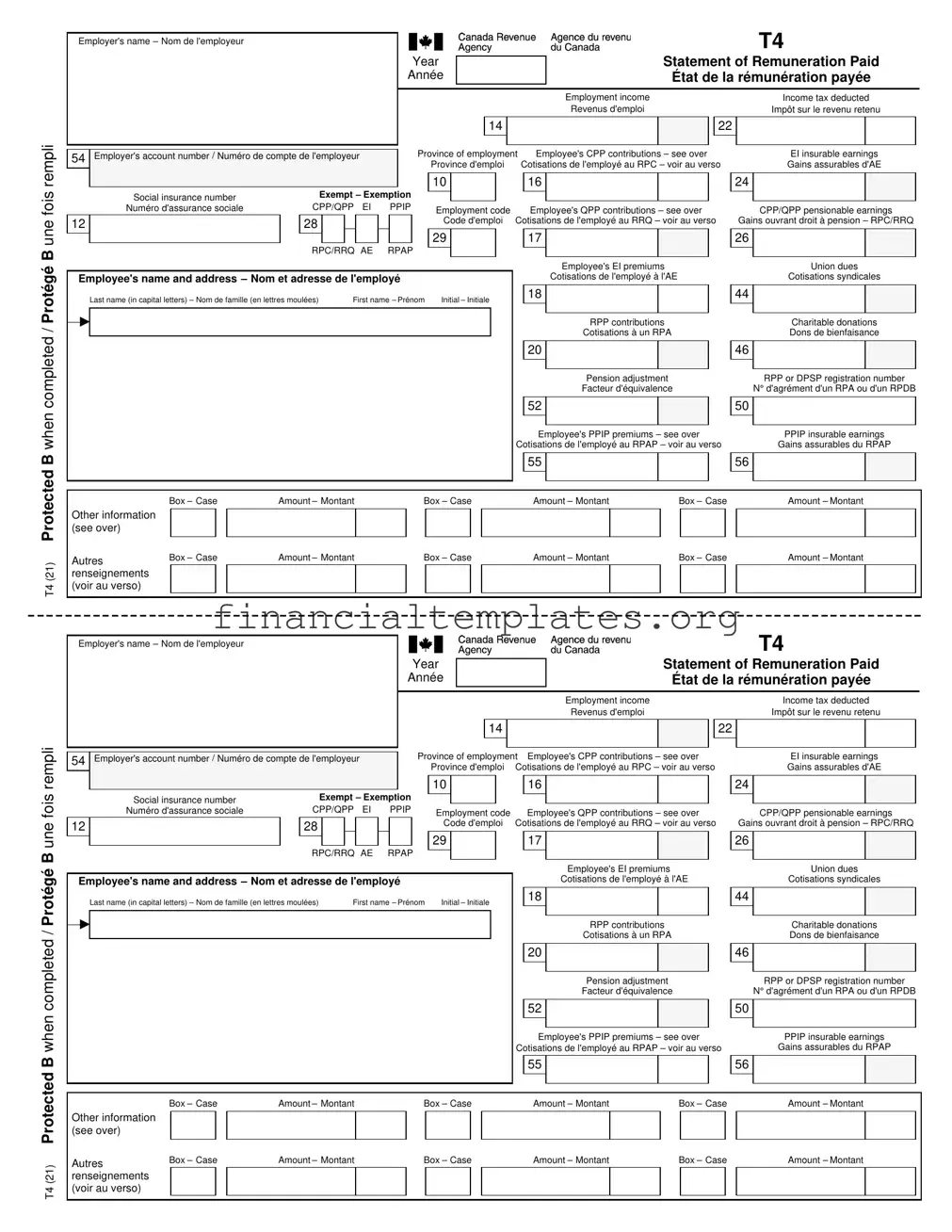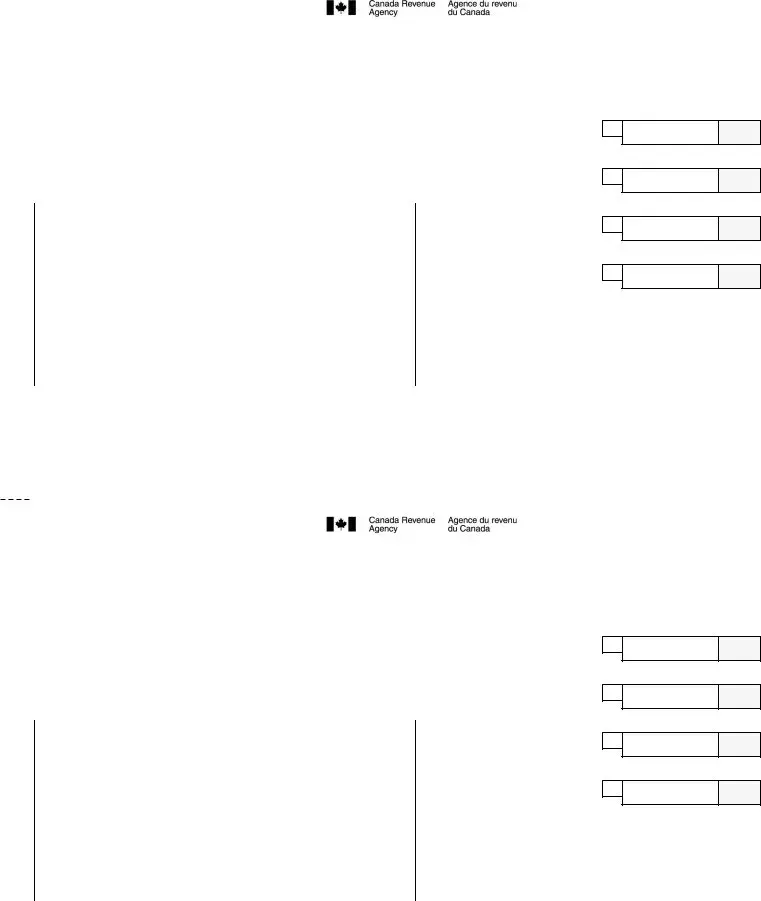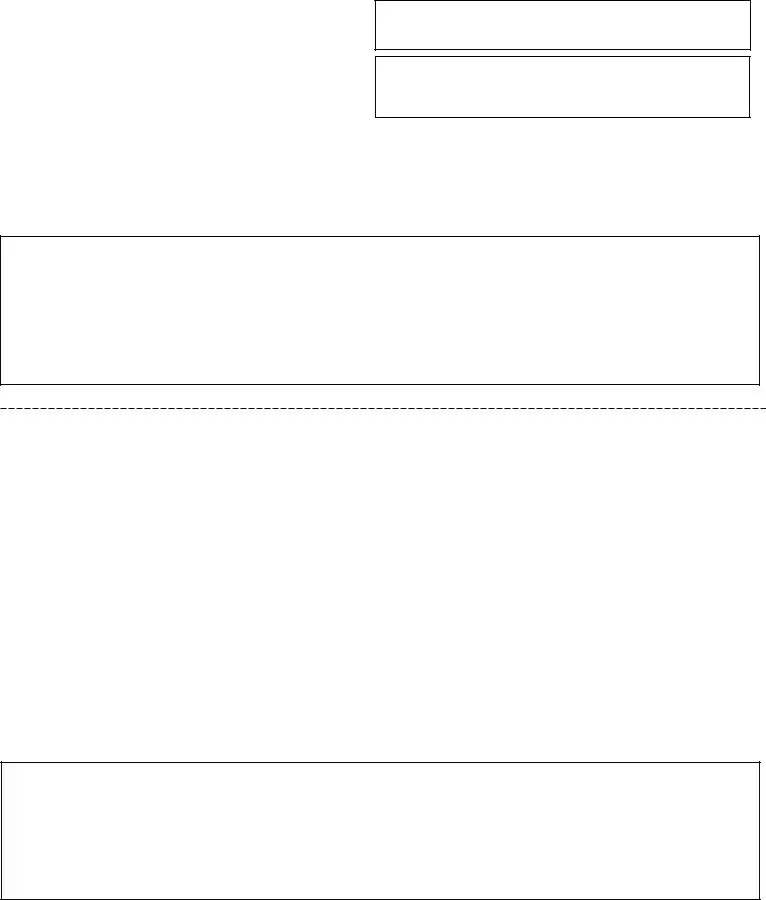The W-2 form, commonly issued in the United States, shares many similarities with the T4 tax form, providing a statement of income and deductions from employment. Both forms report the employee's annual wages and the amount of taxes withheld by employers. They are critical for individuals when they file their annual tax returns, detailing earnings, income tax deductions, social security contributions, and other related financial data.
A 1099 form, widely used for reporting various types of non-employment income in the U.S., such as independent contractor earnings, is similar to the T4 in its function of reporting income to tax authorities. Although the 1099 series cater to a broader range of income sources beyond employment, like the T4, they serve the essential purpose of ensuring income is accurately reported for tax purposes.
The RRSP Contribution Receipt is akin to portions of the T4 form that detail retirement plan contributions. While the T4 encompasses information about RPP contributions and pension adjustments, RRSP receipts specifically provide details on contributions to an individual's Registered Retirement Savings Plan, aiding in tax filing and retirement planning in Canada.
The T4A form, somewhat similar to the T4, is intended for reporting other types of income that are not from employment, such as pension, retirement, annuity, and other income sources. Both forms play crucial roles in tax reporting and preparation in Canada, ensuring that individuals report various income types for taxation accurately.
Similarly, the T5 form reports investment income, including interest, dividends, and some foreign income earned by Canadians. Like the T4 form, which includes information on employment income and related deductions, the T5 ensures taxpayers accurately report their investment income for tax purposes.
The P60 form used in the United Kingdom is the equivalent of the T4 form in Canada, providing a summary of an employee's earnings and taxes paid throughout the financial year. It serves a similar purpose by helping employees complete their self-assessment tax returns, detailing their income tax and National Insurance contributions.
The P45 form, also in the UK, is issued to employees when they leave a job. It's akin to receiving the final T4 from an employer, as it summarizes an employee's salary and taxes paid up until their departure date. While the T4 is annual and comprehensive, the P45 is specific to the termination of employment but similarly helps in tax assessment and transitions.
Unemployment benefit statements, though not a one-to-one comparison, relate to the T4 in that they report amounts paid to an individual, which are necessary for accurate tax filing. Much like employment income is reported on the T4, unemployment payments need to be reported for tax purposes, highlighting a similarity in the function of ensuring comprehensive income reporting.
Payroll records, while not specific forms like the T4, serve a parallel purpose in documenting detailed employment income and deductions throughout the year. These records are foundational in generating accurate T4 forms, reflecting a similar goal of facilitating correct income tax filing by providing clear records of earnings and withholdings.


